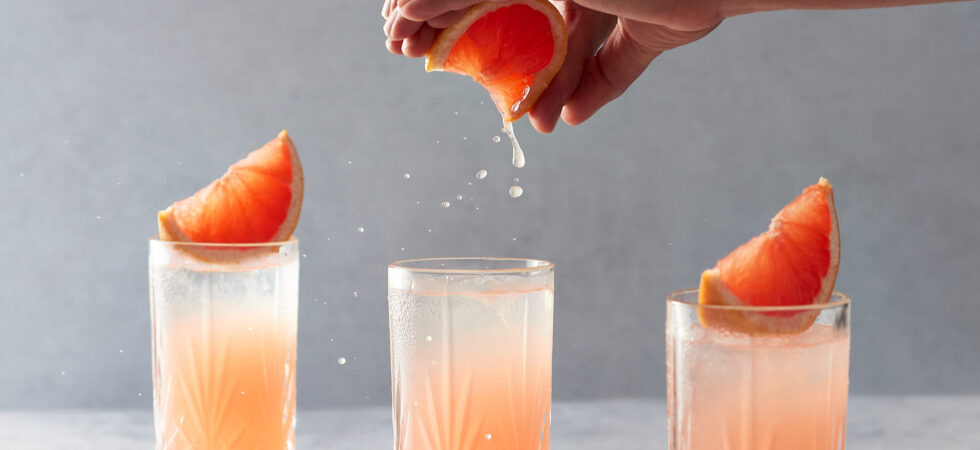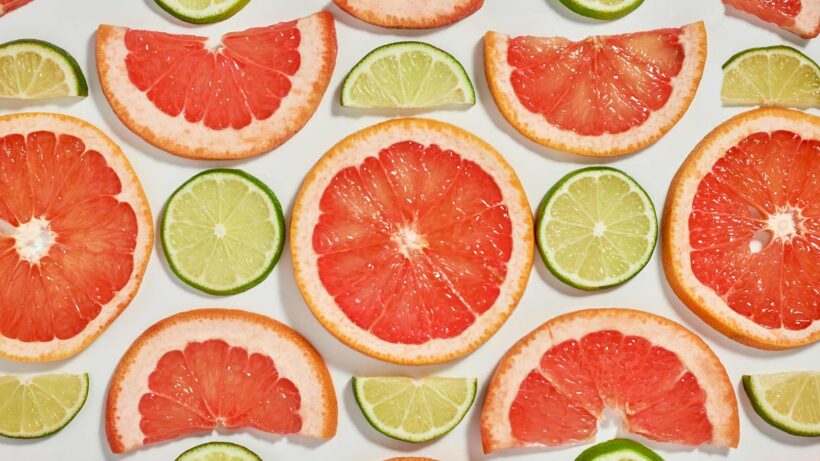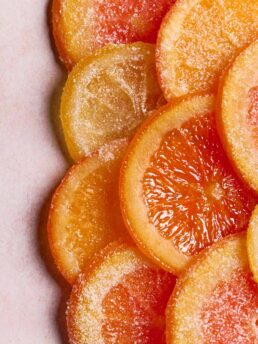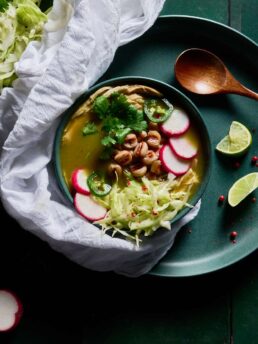Classic Paloma Cocktail

I am and always will be a tequila girlie. But, I am also a HUGE fan of grapefruit, so classic paloma cocktails are definitely a natural fit for me. I will say, however, that a lot of palomas I’ve had out at restaurants are hit or miss. They tend to taste either watered down or too sweet for my tastes. So, I got rid of grapefruit soda and broke everything down to the base ingredients, so I could tinker. Then, I added a healthy dose of fresh grapefruit juice – for an extra hit of acidity and bitterness. Ladies and gents, tinkering is where I thrive. This classic, but non-traditional, paloma cocktail is delish and ready to make your tastebuds sing!

Get the Recipe: Classic Paloma Cocktail
Ingredients
- 3 oz fresh squeezed grapefruit juice
- .5 oz (1tbsp) fresh lime juice
- 1.5 oz blanco or reposado tequila, see FAQs for tequila recs
- .5 oz (1tbsp) Giffard pamplemousse (grapefruit) liqueur
- .25 oz (½tbsp) Cointreau
- 2 dashes Scrappy's grapefruit bitters
- 1-2 oz soda water
Equipment
- 1 chef or paring knife
- 1 cutting board
- 1 citrus juicer or reamer (optional)
- 1 cocktail shaker
- 1 Fine Mesh Strainer (optional)
- 1 Hawthorne Strainer
- 1 cocktail glass
Instructions
- First, place your cocktail glass in the freezer 15-30 minutes before making the paloma, so it can chill. (see notes)
- Next, juice the grapefruits and limes for fresh juice. Then, measure out all of the ingredients. Take your glass out of the freezer, add fresh ice into it, and set it aside.
- Now, pour everything but the soda water into an empty shaker. Add whole ice cubes to the shaker (see notes) and shake for 30-45 seconds.
- Strain into the prepared cocktail glass and float soda water on top to finish.
- Optional: Rim the glass with kosher salt and garnish with a citrus slice (grapefruit or lime) or an herb (rosemary or basil). If you want to garnish with an herb, pinch the herb by the stem with one hand and slap it against your other hand 2-3 times to release it's oils and aroma. Then garnish the cocktail.
Notes
- If you forget to freeze your glass in advance, don’t panic. Simply, add ice cubes to the glass when you remember and let them chill the glass. Replace with fresh ice before you pour in the cocktail.
- If you use crushed ice in this cocktail it will water the whole thing down. The larger the ice cube(s) you use when shaking, the less surface area there is to melt and dilute your drink. Typically only very alcohol forward cocktails, like mint juleps use crushed ice.
- If you don’t have grapefruit liqueur but have access to grapefruit soda, you can add 2oz of that instead of the soda water and liqueur.
- You can also substitute orange or hibiscus bitters for the grapefruit bitter
Nutrition

Frequently Asked Questions
According to Difford’s guide to tequila, there are 7 categories of tequila. The first 5 categories relate to aging.
1. Blanco tequila typically rests for less than 2 months in stainless steel tanks before bottling.
2. Joven tequila, is a mix of blanco and reposado tequilas.
3. Reposado, or “rested” tequila, ages in oak casks for at least 60 days and up to 1 year.
4. Añejo “old” tequilas age in oak casks for between 1-3 years.
5. Extra añejo tequilas (you get the naming by now), age in oak casks for at least 3 years.
The last two categories focus less on aging and more on filtering and flavor.
1. Curados are essentially infused tequilas, which have become considerably more prevalent in the last 2 years.
2. Cristalinos are tequilas filtered with charcoal to make them (you guessed it!) crystal clear.
For this cocktail I recommend using a blanco tequila. Blanco tequilas tend to have a cleaner taste. They are typically herbal forward with notes of citrus, pepper, stone-fruit, and honey. Blanco tequila’s light, delicate flavor allows the acidic, citrusy flavors of the lime and grapefruit to shine and balance.
Some good tequila options for this cocktail are: Siete Leguas, Tres Agaves, Cazadores, Mijenta, Don Julio, El Tesoro, Código, and Espolon.
Reposados are also a possibility, but I would keep to reposado tequilas that have similar tasting notes as the above blancos. Think G4, Santera, Tres Agaves, Código, Siete Leguas, and Cazcanes. Reposado tequilas are going to have some additional flavorings from the oak barrels they rested in, like caramel, vanilla, and oak. They will also taste more of cooked agave, thanks to the aging process.
Traditional palomas use tequila, lime juice, and grapefruit soda. My recipe differs in a few ways.
1. No grapefruit soda. Different sodas have different sweetnesses and sometimes (especially in the US) it’s difficult to find grapefruit soda. (The only grapefruit soda that I know of is made by Fever Tree.) I used Giffard’s grapefruit liqueur and soda water instead of grapefruit soda.
2. Fresh grapefruit juice. While, this isn’t actually traditional, you will see lots of recipes add fresh juice. Like those cooks, I also prefer fresh grapefruit juice. It enhances the acidity of the cocktail and gives a more pungent grapefruit flavor than a soda.
3. Cointreau. I really like a little note of orange in this cocktail. I feel like it adds another citrus layer, to go alongside the lime and grapefruit.
4. Grapefruit bitters. Think of bitters the way you think of cooking spices. Bitters are not main ingredients, but they still shape the flavor of an overall dish or, in this case, a beverage. I use grapefruit bitters in this cocktail to amplify the grapefruit flavor even more.
While I have strayed from tradition, I still consider this a classic paloma cocktail, because I’m chasing the traditional paloma taste.
You should double strain your cocktail for 2 reasons that basically do the same thing:
1. It takes the pulp out of the juice.
2. It removes the tiny ice chips from your drink that will slip through the hawthorne strainer.
Straining the cocktail gives it a smooth texture and uniform temperature.
If you don’t mind the initial texture of the ice chips, strain the juice after you squeeze it but before you add it into the mix. Pulp is great in your morning OJ, but it’s not the best in your handcrafted cocktail. It can throw off the flavor balance in your cocktail when extra lime or grapefruit hits your tastebuds.
If you want a picture perfect salted salted rim, dip or paint the rim with a thin layer of agave syrup. Then, pour some kosher salt onto a flat plate and tilt the plate to gather the salt to one side. Next, gently dip the edge of the glass into the salt, turning the glass until you come full circle. If you really want to use a lime wedge to deposit lime juice to the rim for salting, feel free to do that as well.
OF NOTE: The salted rim should be done before chilling the glass or the condensation on the glass will prevent the agave and salt from sticking uniformly. Additionally, holding the glass for an extended period of time will completely defeat the purpose of chilling it.
Traditionally, a paloma cocktail is served in a highball glass or a Collins glass. However, you can also use a rocks glass or a stemmed glass depending on personal preference and presentation.
If you decide to use stemmed glasses, like a coupe glass or a Nick & Nora glass, strain the shaken cocktail into an empty, chilled glass. Ice would be precarious. 😉



